Blagdon Lake Birds
Nathusius' Pipistrelle Pipistrellus nathusii [Keyserling & Blasius, 1839]
(Uncommon, resident. Probable rare to scarce PM & WV.)
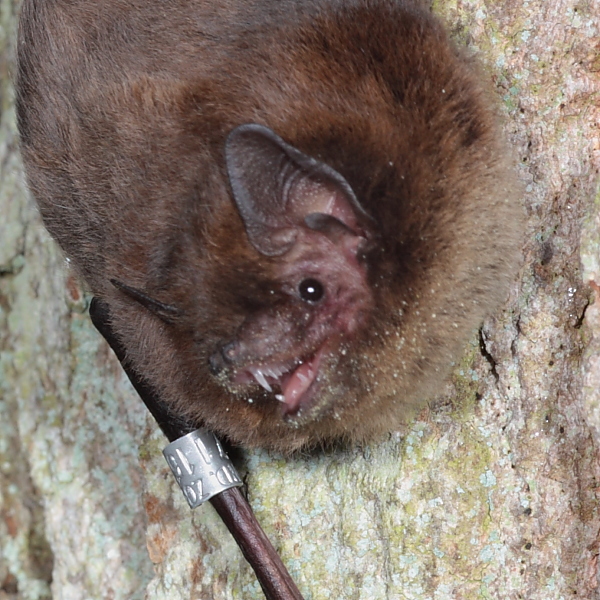
Nathusius' Pipistrelle Pipistrellus nathusii is a widely distributed, though rare or under-recorded, resident bat in the UK with only 7 maternity roosts known as of the end of 2011. It is also a winter visitor from Scandinavia with the first UK record coming from Whalsay, Shetland Isles in 1940.
The bats usually leave their roost about 20 minutes after sunset to forage within a few kilometres of large water bodies along lowland deciduous woodland edges and rides, meadows and over the water itself. Nathusius' are slightly larger than Common and Soprano Pipistrelles and their diet is given as medium-sized flying insects such as Chironomid midges, mosquitos and caddis flies. According to Jon Russ "known maternity roosts are located in brick buildings in cavity walls or under slates. In both summer and winter, individuals are found in cracks in brickwork, under soffit boards, fissures in rocks and tree hollows."
Locally, the late Dr. Kate E. Barlow discovered six Nathusius' Pipistrelles between August 1994 and September 1995 in the village of Ubley, and at Chew Valley and Blagdon Lakes, including a pair caught emerging from a roost at Heron's Green, Chew Valley Lake on 22nd September, 1995. However, subsequent searches by Jon Russ failed to locate any local maternity roosts. The search for a local maternity roost is one of the aims of research by Daniel Hargreaves, who has discovered territorial sites at Blagdon where males give the complex social song to try and attract females. Daniel and the team have been trapping, ringing and radio-tagging male Nathusius' Pipistrelles which are also found, occasionally, roosting in lakeside bat boxes as the search goes on. We have recorded Nathusius' Pipistrelles around the whole lake and have traced them back to local hamlets and farms where they roost.
Finally, on 11th May 2013, we caught a female Nathusius' Pipistrelle at Blagdon Lake during the Nathusius' Survey run by Daniel, YACWAG and Avon Bat Group. The bat was not pregnant, so the opportunity was taken to radio-tag her for tracking purposes as the survey team continue to seek a local maternity roost.
In August 2013 Daniel organised the 1st National Nathusius's Pipistrelle Conference which we held at Ubley Village Hall. I wrote a short illustrated report about the day which you can read by clicking on the link above.
Normal weight 6-10g, Forearm length 32.2-37.1 mm, Fifth finger length 41-48 mm, Third finger length 57-62 mm.
The echolocation frequency of maximum energy (FM/qCF & qCF calls) peaks at 39.3 kHz (range 35.5-41.9) with an inter-pulse interval of 129.0 ms (range 88.6-237.0) and call duration of 5.88 ms (range 3.0-7.9).
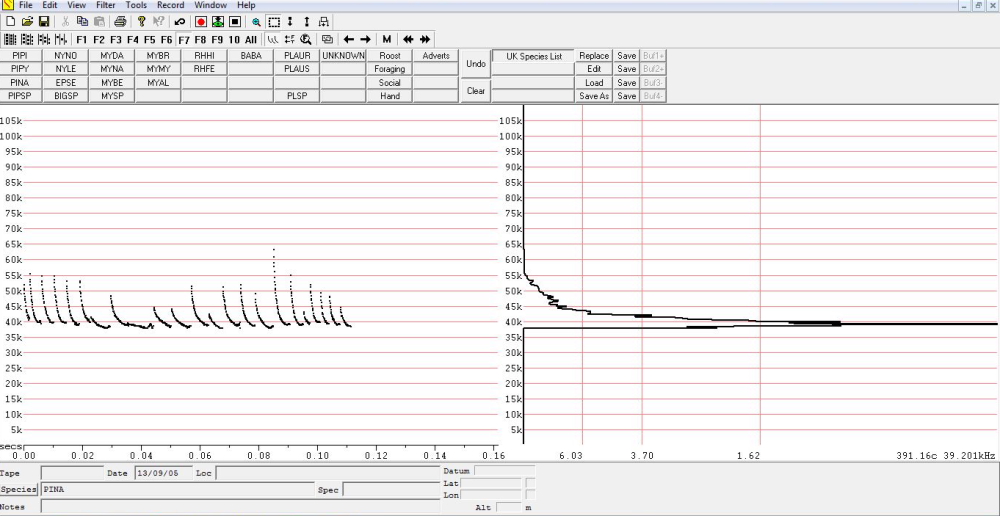 Nathusius' Pipistrelle echolocation calls (Analook f7 compressed freq and cycles), Bat House. 2013
Nathusius' Pipistrelle echolocation calls (Analook f7 compressed freq and cycles), Bat House. 2013
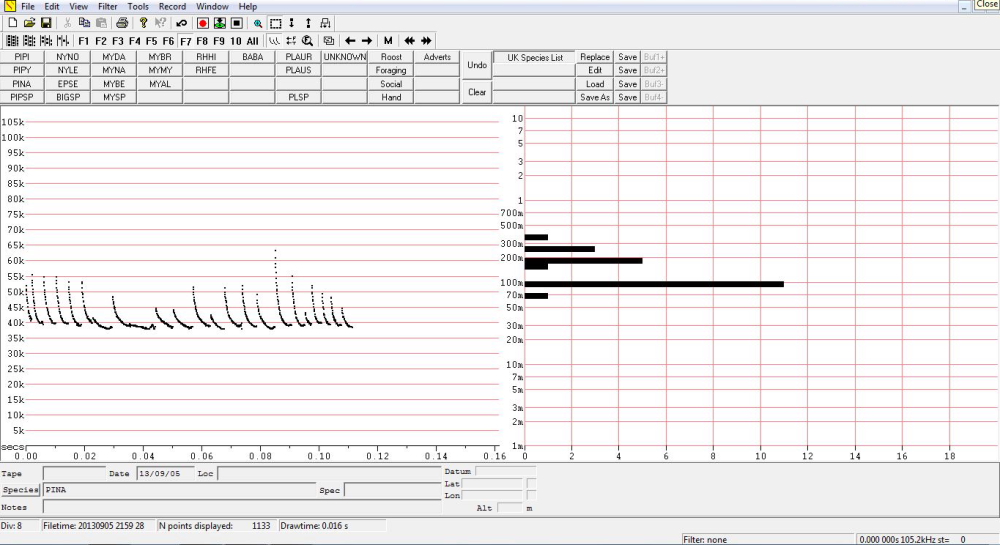 Nathusius' Pipistrelle echolocation calls (Analook f7 compressed freq and TBC), Bat House. 2013.
Nathusius' Pipistrelle echolocation calls (Analook f7 compressed freq and TBC), Bat House. 2013.
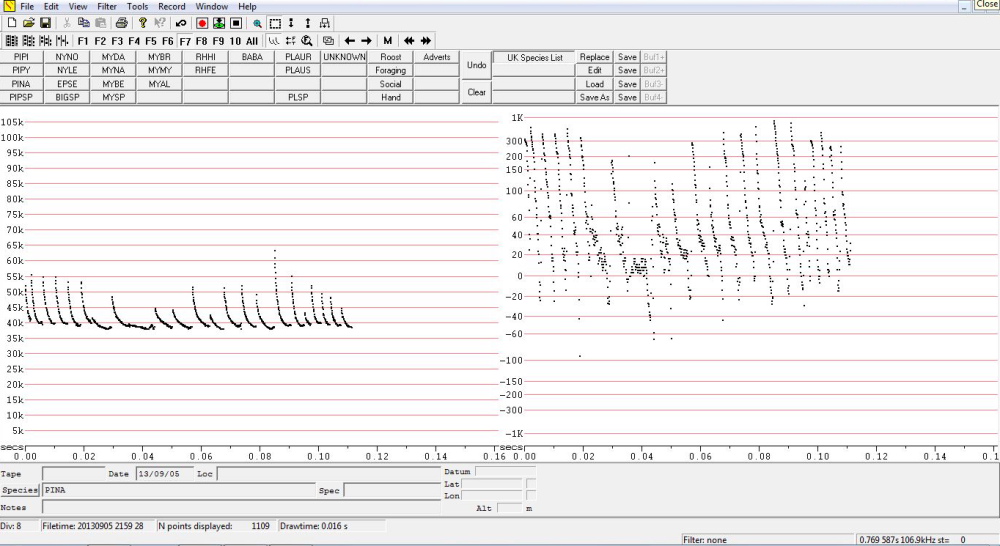 Nathusius' Pipistrelle echolocation calls (Analook f7 compressed freq and slope), Bat House. 2013.
Nathusius' Pipistrelle echolocation calls (Analook f7 compressed freq and slope), Bat House. 2013.
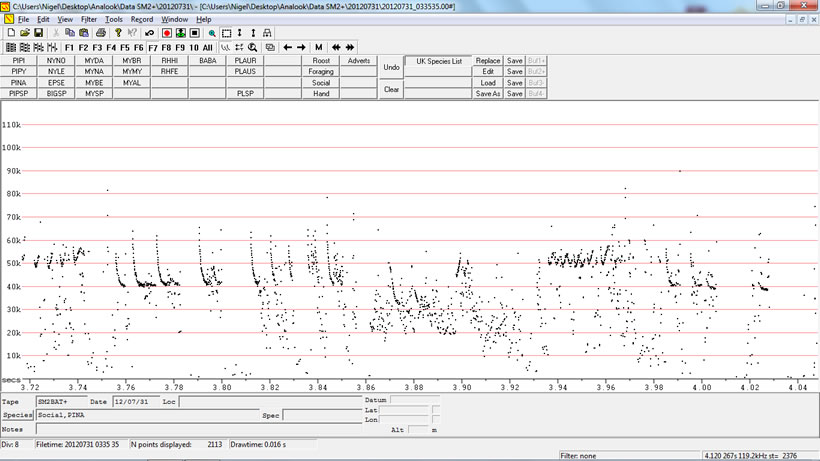 Nathusius' Pipistrelle advertisement calls (Analook f7 compressed frequency only), Bat House. 2013.
Nathusius' Pipistrelle advertisement calls (Analook f7 compressed frequency only), Bat House. 2013.
Other identification features: The dentition of upper incisors I2 and I3 and pre-molar P3 is characteristic, as is the cell that runs from the elbow to fifth finger in the wing membrane (plagiopatagium) which is divided by a cross-vein (or bar, if you prefer).

Nathusius' are not easy to identify without experience, but one of the features of the male is it's bulbous egg-shaped penis with a fringe of white hairs as shown below:
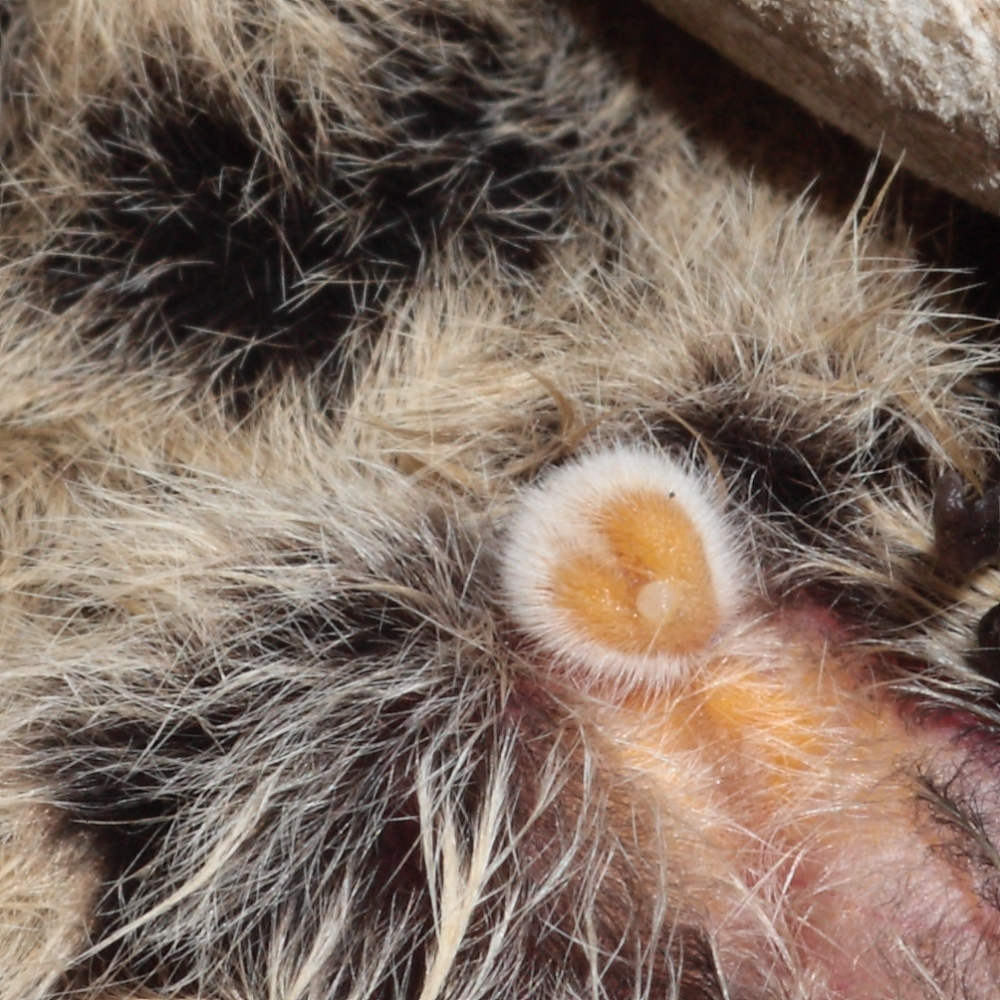
Note: I write Nathusius' Pipistrelle with the apostrophe at the end (as do many other people and writers), but the National Biodiversity Network (NBN) says this is "badly formed / unverified". Ho hum!
Bibliography (sources of information):
- Bat Conservation Trust website.
- Dietz, C., Helverson, O. von, Nill, D. 2009. Bats of Britain, Europe and Northwest Africa. A&C Black Publishers Ltd., London.
- Fisher, J., Francis, J. & Jones, Prof G. The Bats of Britain (an online guide). University of Bristol, School of Biological Sciences website
- Russ, J. 2012. British Bat Calls A Guide to Species Identification. Pelagic Publishing, Exeter.
- Russ, J. Nathusius' Pipistrelle in Great Britain & Ireland website.